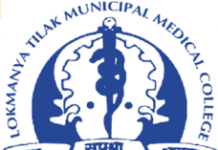A New Approach to TB Vaccination
To create more effective TB vaccine, researchers at Weill Cornell Medicine have engineered two strains of mycobacteria with built-in “kill switches.” These switches can be activated to eliminate the bacteria after they stimulate an immune response.
The Challenge of TB and Vaccination Limitations
While tuberculosis is well-controlled in most developed nations, it still claims over a million lives worldwide each year. Mycobacterium tuberculosis spreads through the air and establishes chronic infections in the lungs, leading to severe respiratory disease.
The existing Bacillus Calmette-Guérin (BCG) vaccine, derived from a weakened strain of Mycobacterium bovis, has been in use for over a century. However, its efficacy is limited. BCG protects children from tuberculosis meningitis but does not effectively prevent pulmonary TB in adults. As a result, it is only administered in high-incidence regions.
High-Dose BCG and Its Safety Concerns
As reported by theprint, previous studies by researchers at the University of Pittsburgh and the National Institutes of Health’s Vaccine Research Center revealed that administering high doses of the BCG vaccine intravenously—rather than under the skin—offered better protection against lung infections in macaque monkeys. However, the challenge remained: making high-dose intravenous BCG safe without compromising its immune-stimulating properties.
Engineering a Kill Switch for Safety
To address this, the Weill Cornell team developed a version of BCG that maintains its ability to trigger an immune response but can be selectively eliminated.
After testing around 20 different strategies, they found that lysins—enzymes produced by viruses that infect BCG—could cause the bacteria to self-destruct. Using molecular engineering, they inserted two lysin genes into BCG and linked them to gene regulators that respond to antibiotics. By adding or removing the antibiotic, they could activate or deactivate the kill switch.
Promising Results in Preclinical Studies
In their experiments, the researchers administered high doses of the modified BCG intravenously to antibiotic-treated macaques. When they withdrew the antibiotic, the kill switch triggered bacterial self-destruction. This process released antigens that further strengthened the monkeys’ immune response, ultimately protecting them from lung infections caused by M. tuberculosis.
Overcoming Barriers to TB Vaccine Development
Despite these promising results, testing TB vaccine in clinical trials presents significant challenges. TB develops slowly, and only a small fraction of infected individuals actually become sick. As a result, large-scale trials require long durations and extensive funding—often costing hundreds of millions of dollars.
A Safer Strain for Controlled Human Studies
To accelerate vaccine development, the Weill Cornell team collaborated with Harvard T.H. Chan School of Public Health to engineer a highly safe strain of M. tuberculosis for controlled human infection trials. They created a strain with a “triple kill switch” that employs three independent molecular mechanisms to eliminate the bacteria.
Even in severely immunocompromised mice, the kill switch effectively halted the infection, leaving no detectable bacteria. The team is now conducting further tests in mice and non-human primates to confirm the system’s reliability.
Future Prospects for TB Vaccines
Researchers are proceeding cautiously, recognizing the risks of working with one of the most successful human pathogens in history. Ensuring the highest safety standards is critical as they move toward human trials.
If successful, these innovations could revolutionize TB vaccine, making it more effective and safer for millions worldwide.
























